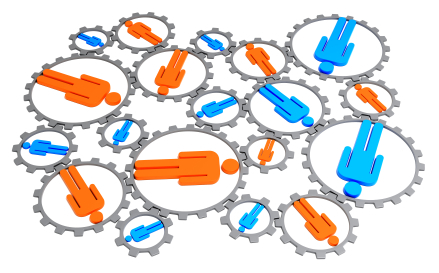The informal organisation

 The formal business organisation is shown by the hierarchy of the business and the organisation chart. This shows the formal relationships - the chain of command and the span of control. This indicates clearly who is responsible to whom, and for what. However, many relationships between employees in a business are informal and a term used to refer to this is the informal organisation.
The formal business organisation is shown by the hierarchy of the business and the organisation chart. This shows the formal relationships - the chain of command and the span of control. This indicates clearly who is responsible to whom, and for what. However, many relationships between employees in a business are informal and a term used to refer to this is the informal organisation.
The informal organisation is not a planned one and it will evolve spontaneously as circumstances and work environments change. The informal organisation is based on personal relationships and social networks in contrast to the more formal organisation. Behaviour in the informal organisation is guided by group norms (notions of what is acceptable) rather than by the more formal rules of the organisation.
In a study of informal networks in the banking industry in 1993, Krackhardt and Hanson found three different types of informal relationship. These were:
- Trust networks - relationships where employees share information with people they trust and where they back each other up in times of crisis.
- Communication networks - these are networks in which employees regularly talk to each other about work-related issues. These communication networks will not generally follow the conventional lines of authority of the firm.
- Advice networks - networks of colleagues who people turn to for support and advice.
Informal organisations have several positive roles and functions:
- Improving motivation by promoting e a sense of belonging and therefore satisfying Maslow's social needs.
- Providing a communication channel that can disseminate information more quickly than the formal organisation. However, the information may be regarded in many cases as unsupported gossip and 'disinformation'.
- Creativity may be more evident in informal groups ads individuals feel less constrained by their environment.

For more information on the informal organisation, look at the Wikipedia article on the informal organisation, and the Times 100 page on the formal and informal organisation.
